With the exponential growth of yoga in the last few years, class sizes are getting bigger, and the content more imaginative. It is wonderful that more people are exposed to yoga. As a physical therapist, what concerns me is the lack of emphasis on internal stabilization. This stability comes from deep muscle activation, in sanskrit called bandha, which translates to “Lock.”
In our fast-paced lifestyle, we are often tempted to put ourselves in a position of compromise to “just get things done.” We skip the part where we find our sense of center, and we forget to return to it repeatedly. This is what the practice of bandha teaches us. Developing the bandhas takes effort to build strength, vigilance to maintain, and patience to master. However, once the bandhas are in place, all the other aspects of yoga practice become more accessible, fluid, and enjoyable.
Bandhas stabilize the body during dynamic movement. Some yoga postures can even be damaging if done repeatedly without this awareness. Sure, a teacher might now and then mention a bandha, or advise students to “engage the pelvic floor.” . The problem is that many people have never been taught how to access the bandhas in the first place.

What are bandhas, and how do we access them?
In yoga there are essentially three bandhas in the body. The main two we will discuss today are “mula bandha” and “uddhiyana bandha,” which represent the pelvic floor muscles and the transversus abdominus muscle, respectively. These are the deep stabilizers of the trunk and pelvis. The third bandha is “jhalandara bandha,” which involves the core muscles of the neck and head known as the deep neck flexors (longus colli and longus capitus muscles).
Mula Bandha (Pelvic Lock)
Let’s start with mula bandha, the root lock, or the pelvic floor. In physical therapy practice we often teach patients to engage their pelvic floor if they have hip, back, and leg pain. I even now teach pelvic floor exercises to help patients who have neck pain, because the pelvic floor is the “foundation of the house.” If the head and neck are the roof of the house, you can imagine how a poor foundation would result in an unstable roof.
In my experience working with patients, these muscles are inherently difficult to engage for several reasons. The first is that they are “postural muscles.” Unlike big mover muscles, like the thigh muscles that bend the knee, the postural muscles are under subconscious control. This makes it difficult to fire them at will, and they are harder to feel. The thing that makes pelvic floor muscles really hard to access is the fact that we can’t see them, and many people have never even heard of them.
How to access Mula bandha
As mentioned above the pelvic floor is hard to access, but visualization can be helpful.
- Sit on a firm chair with knees and hips at 90 degrees and feet flat on the floor.
- Sitting up straight, hinge forward and back from the pelvis until to feel ventered on your sit bones (the boney protrusions at the base of the pelvis).
- From here, draw the sit bones closer together, without tightening your gluteal muscles.
- Keep this as you visualize the sit bones pressing down into the chair, as the space between them moves up (this is the doming up/activation of the pelvic floor muscles that make mula banda).
- If you can achieve this lifting sensation, you can try maintaining that while visualizing your coccyx (the tailbone) and the pubic symphysis (the very front of your pelvis) also moving towards each other.
- These four points (the sits bones, coccyx, and pubic symphysis) all are moving towards a central point.
- Even if you feel nothing initially, with continued visualization you will begin to feel something. It is a process.
Uddhiyana Bandha (Navel Lock)
Also known as “flying up” bandha, this is the place between your navel and your pubic bone that wraps around your waist. It creates lightness and lift, and stabilizes the trunk and pelvis during movement and during static standing and sitting. A long, flat sheath of muscle, this bandha is made up primarily by the transversus abdominus and the internal oblique muscles.

How to access Uddhiyana Bandha
One accessible way to feel uddhiyana bandha is by activating the leg muscles strongly.
- Stand with your feet hip width apart, feet parallel.
- Draw up through the inner arches of the feet, while rooting the base of the big toe, base of the pinky toe, and straight down through the heel. You may feel something light up in your core with just this! If not, no worries, keep going.
- Imagine you are drawing all the musculature of your legs up towards your pelvis.
- Maintain that as you tighten the front and back of the thighs simultaneously.
- At this point you should feel the area below your navel turning on. That is uddhiyana bandha.
- Now see if you can relax your legs somewhat while keeping the activation in your abdomen.
Jalandhara bandha (Throat Lock)
While the full expression of Jalandhara Bandha is more applicable during breathwork, a sense of this lock can help with asana practice as well.
Due to our lifestyle that now frequently involves sitting, the head tends to come forward with the chin protruding. Then, when it comes time to practice yoga on the mat, we carry this poor posture with us.
Jalandhara bhanda can mitigate this effect by teaching us to draw the head back over our spine. In the full expression of the bhanda, the chin is nestled in the nook of the breast bone between the collar bones, called the sternal notch. This can be a good release of the fascia along the back of the neck, but is impractical for asana practice and may cause strain for some individuals.
A lighter version of Jalandhara bhanda can help us find a neutral and stable position of the head and neck by recruiting the muscles that make the “core of the throat.” These deep muscles return the head to a neutral position.
How to access Jalandhara bandha (throat lock)
- Sit in a firm chair, feeling your sit bones.
- Exhale completely through your mouth as you let your neck and shoulders relax and your front lower ribs move down and in (for more info about the importance of the ribs here, see my other post “the posture myth”)
- Now, draw your head straight back so that it sits atop the rest of your spine.
- Maintain a relaxed posture of your neck and shoulders as you draw slightly nod your head down as if you are holding a small orange between your chin and the space between your collarbones.
- Imagine the base of your skull floating up as your chin drops slightly, lengthening the back of your neck.
- Check to see that your shoulders are still relaxed. If not, take another exhale and let them drop.
- Stay here a few breaths, inhaling to lengthen through the back of the neck, exhaling to settle the shoulders and the front lower ribs.
Yoga and Injury
As a physical therapist, the most common yoga injuries I see are in people who are naturally flexible (usually young to middle-aged women, which happens to be the largest demographic of yoga practitioners). These individuals can put themselves in many challenging postures but lack the deep stabilization of the bandhas. I also see stronger men and women who are able to muscle through arm balances but end up with neck and shoulder pain because really it is the deep connections of the bandhas that create a sense of levity in arm balances, not the arms. Practicing poses with correct activation of the deep stabilizing muscles may mean that you have to approach the pose in a new way, and you may not be able to make the pose look as good initially. This is where the yoga really happens- when we shift our focus from what the pose looks like to what it feels like, when we move from place of integrity and patience.
It can take time to develop a keen awareness of the bandhas and to incorporate them into practice. However, by learning to engage the bandhas, yoga injuries can be prevented and healed by practicing with increased awareness, intention, and patience.

